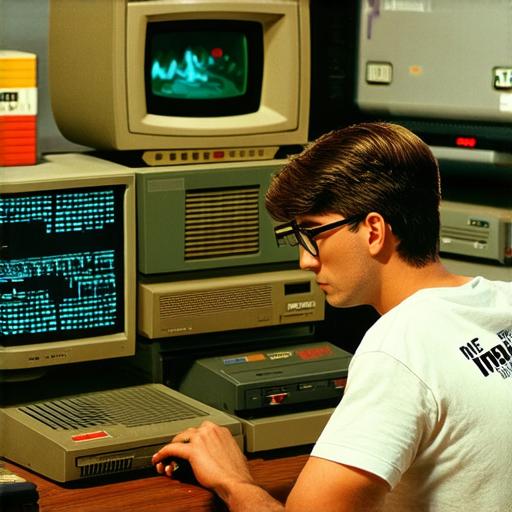Video games have come a long way since their inception in the early 20th century. From simple games that were played on simple devices to today’s complex, immersive experiences, video games have evolved significantly over the years.
Introduction
In this article, we will explore the history of video games and examine the first video game ever created. We will also look at how it impacted the gaming industry and what lessons can be learned from its success.
The First Video Game: Tennis for Two
Tennis for Two is widely regarded as the first video game, having been created in 1958 by William Higinbotham. The game was designed to be played on an oscilloscope screen and was intended to be a simple diversion for employees of Brookhaven National Laboratory during the slow periods of the year.
Higinbotham was a physicist who had worked on developing radar technology, and Tennis for Two was his attempt to create a game that would help to relieve stress and keep the minds of scientists occupied during their downtime.
The game was simple in design but surprisingly engaging. Players would control two paddles on the screen and hit a ball back and forth across the screen. The objective of the game was to make the ball bounce off the bottom of the screen without allowing it to go too far to the left or right.
The game could be played by up to four players, with each player controlling one of the paddles.
Tennis for Two quickly gained popularity among employees at Brookhaven National Laboratory and other scientific institutions. It was a simple and fun diversion that could be played in short sessions, making it perfect for busy scientists. The game also had educational benefits, as it helped to improve hand-eye coordination and reflexes.
Impact on the Gaming Industry
The success of Tennis for Two paved the way for the development of video games as a form of entertainment. The game’s simplicity and accessibility proved that video games could be enjoyed by a wide range of people, not just scientists and other experts in their fields.
Tennis for Two also demonstrated the potential for video games to be used as a tool for education. The game’s hand-eye coordination and reflexes helped to improve cognitive function and could potentially be used to help children with learning disabilities.
In addition, Tennis for Two was one of the first video games to be played on an oscilloscope screen. This paved the way for the development of other types of screens that would be used in future video games.
Lessons Learned
The success of Tennis for Two can teach us a number of valuable lessons about the development of video games. Firstly, it shows that simplicity and accessibility are key to the success of a video game. Tennis for Two was easy to play and understand, making it appealing to a wide range of people.

Secondly, Tennis for Two demonstrated the potential for video games to be used as an educational tool. The game’s hand-eye coordination and reflexes could potentially be used to help children with learning disabilities or improve cognitive function in other ways.
Finally, Tennis for Two was one of the first video games to be played on an oscilloscope screen. This paved the way for the development of other types of screens that would be used in future video games, allowing for more complex and immersive experiences.
Conclusion
Tennis for Two is widely regarded as the first video game ever created. The game was designed to be a simple diversion for employees at Brookhaven National Laboratory during slow periods, but it quickly gained popularity and paved the way for the development of video games as a form of entertainment. The game’s simplicity, accessibility, educational potential, and impact on the gaming industry demonstrate the importance of simplicity, accessibility, and innovation in the development of successful video games. As the gaming industry continues to evolve, the lessons learned from Tennis for Two will continue to be important in shaping the future of video games.




